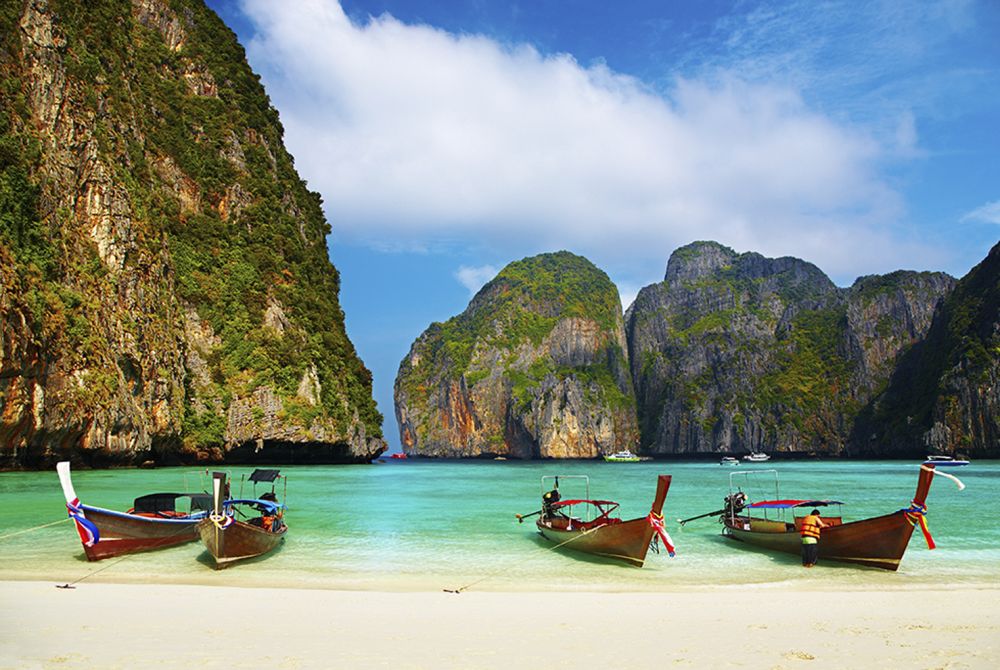

Nestled among the stunning Phi Phi Islands of Thailand, Maya Bay has been a jewel in the country's tourism crown for decades. This picturesque bay, embraced by 100-meter high cliffs on three sides, gained worldwide recognition after the release of the movie "The Beach" in 2000, starring Leonardo DiCaprio. Following the movie's success, Maya Bay experienced a significant surge in popularity, becoming a bucket list destination for travelers from around the globe.
Initially, the bay was a relatively undisturbed paradise, visited by only a handful of tourists who were mainly backpackers and adventure seekers drawn to the islands' natural tranquility and beauty. However, the post-movie influx of visitors transformed the area, and soon, Maya Bay was welcoming thousands of tourists each day, eager to witness its turquoise waters and pristine sands.
The growth in tourism brought economic benefits to the local community but came with its challenges. The environmental impact of mass tourism began to take a toll on the bay's ecosystem. Concerns over the sustainability and preservation of the natural habitat led to the closure of Maya Bay in June 2018, to let the bay recover from the damages caused by over-tourism. This necessary pause allowed for ecological rehabilitation work, including coral reef restoration and natural replenishment of the bay.
After years of ecological restoration efforts, Maya Bay reopened to tourists with strict regulations in place. The new rules include a cap on the number of visitors per day, the establishment of designated areas for boats, and the prohibition of swimming in certain zones to protect the coral reefs. Eco-friendly tourism practices have since been actively promoted to ensure the future sustainability of Maya Bay and its surrounding natural resources.
The latest trend in tourism at Maya Bay revolves around responsible travel and sustainable experiences. Visitors are now more conscious of their environmental impact and are encouraged to engage in activities that support the preservation of the delicate ecosystem. Educational tours, promoting awareness of the local flora and fauna, as well as community-based initiatives that involve the local population in tourism, are growing in popularity.
Additionally, the implementation of advanced booking systems and visitor scheduling is another trend aimed at managing tourist numbers more effectively. This not only ensures that travelers have a more exclusive experience but also helps maintain the newly established environmental safeguards.
The story of Maya Bay is one of soaring popularity, impact, closure, and rebirth, illustrating the delicate balance between tourism and environmental conservation. As tourism to Maya Bay continues under the new guidelines, visitors have a unique opportunity to witness a renowned destination that has been given a chance to heal and flourish once again, all while enjoying the unrivaled beauty of one of Thailand's most iconic landscapes.